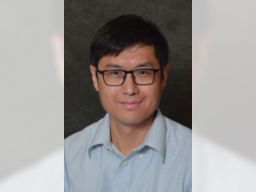Colloquium: Dr. Yuan Wang | Purdue University
In-Person PHYS 401
Location
Physics : 401
Date & Time
May 10, 2023, 3:30 pm – 4:30 pm
Description
TITLE: Toward Improving Black Carbon Simulations and Constraining Its Radiative Forcing by Combining Field Observations and
Climate models
ABSTRACT: Light absorbing aerosols (LAC) exert profound impacts on air quality and climate because of its high absorption cross-section over a broad range of electromagnetic spectra, but the current results on absorbing and scattering capability of LAC particles during atmospheric aging remain conflicting. Here, we quantified the aging and variation in the optical properties of black carbon (BC) particles under ambient conditions using novel environmental chambers, radiation transfer models, as well as global aerosol-climate models. BC aging exhibits two distinct stages, i.e., initial transformation from a fractal to spherical morphology with little absorption variation and subsequent growth of fully compact particles with a large absorption enhancement. We capitalize available direct observations of BC-containing particle physical and chemical properties to calibrate key parameters associated with BC lifetime and physical properties in a global climate model, NCAR CESM. Our recent field measurements targeted on a variety of microphysical properties of individual particles across the entire BC-containing particle population by coupling multiple state-of-the-art instruments. They provide unique insight into the multi-level BC heterogeneities that fully reconcile the model-measurement gap. Following those emerging observational constraints, a series of model development has been done to improve the representation of BC microphysics in climate models. Our analyses further indicate that BC under polluted urban environments could play an essential role in pollution development and contribute importantly to large positive radiative forcing.
ABSTRACT: Light absorbing aerosols (LAC) exert profound impacts on air quality and climate because of its high absorption cross-section over a broad range of electromagnetic spectra, but the current results on absorbing and scattering capability of LAC particles during atmospheric aging remain conflicting. Here, we quantified the aging and variation in the optical properties of black carbon (BC) particles under ambient conditions using novel environmental chambers, radiation transfer models, as well as global aerosol-climate models. BC aging exhibits two distinct stages, i.e., initial transformation from a fractal to spherical morphology with little absorption variation and subsequent growth of fully compact particles with a large absorption enhancement. We capitalize available direct observations of BC-containing particle physical and chemical properties to calibrate key parameters associated with BC lifetime and physical properties in a global climate model, NCAR CESM. Our recent field measurements targeted on a variety of microphysical properties of individual particles across the entire BC-containing particle population by coupling multiple state-of-the-art instruments. They provide unique insight into the multi-level BC heterogeneities that fully reconcile the model-measurement gap. Following those emerging observational constraints, a series of model development has been done to improve the representation of BC microphysics in climate models. Our analyses further indicate that BC under polluted urban environments could play an essential role in pollution development and contribute importantly to large positive radiative forcing.
